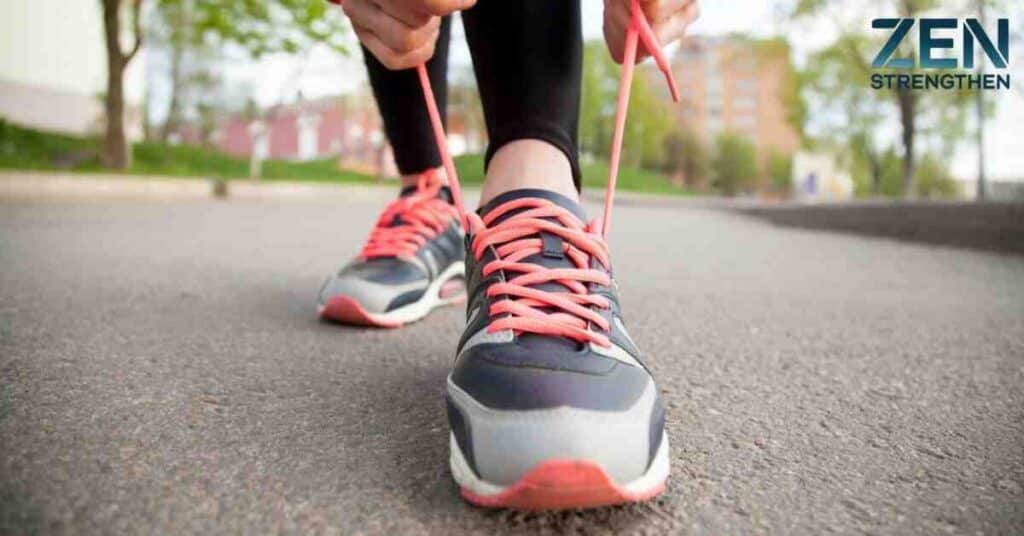In the ever-evolving landscape of fitness tracking and personal health management, step counting has emerged as a cornerstone metric. As we stride into 2024, the question How many miles are 14000 steps? has become increasingly relevant for health conscious individuals worldwide.
This comprehensive guide delves deep into the intricacies of step distance conversion, offering you a thorough understanding of what your daily step count truly means for your overall well-being.
Decoding the Step-to-Mile Conversion
The Basics: How Far is miles in 14000 steps?
Recent studies and data analysis in 2024 confirm that for the average adult, miles in 14000 steps equate to approximately 6.58 miles (10.59 kilometers). However, this seemingly straightforward conversion opens up a world of variables and considerations that can significantly impact your personal fitness journey.
Understanding Stride Length: The Key to Accurate Measurements
Your stride length plays a crucial role in determining the actual distance covered by your steps. Let’s break down how different walking styles affect the distance covered in miles in 14000 steps :
| Walking Style | Average Stride Length | Miles in 14,000 Steps | Kilometers in 14,000 Steps |
| Casual Stroll | 2.2 feet (0.67 m) | 5.8 miles | 9.33 km |
| Normal Pace | 2.5 feet (0.76 m) | 6.58 miles | 10.59 km |
| Power Walking | 2.9 feet (0.88 m) | 7.2 miles | 11.59 km |
| Light Jogging | 3.2 feet (0.98 m) | 8.1 miles | 13.04 km |
Factors Influencing Your Step Distance
- Height and Leg Length: Taller individuals generally have longer strides, covering more distance with each step.
- Age: As we age, our stride length may decrease slightly, affecting overall distance covered.
- Fitness Level: More physically fit individuals tend to have longer, more efficient strides.
- Terrain: Uneven or hilly terrain can significantly alter your stride length and step count.
- Footwear: The type of shoes you wear can impact your gait and stride length.
The Science Behind Your Steps

Biomechanics of Walking
Understanding the biomechanics of walking helps us appreciate the complexity behind each step we take. A typical walking gait cycle consists of two main phases:
- Stance Phase: Approximately 60% of the cycle, where the foot is in contact with the ground.
- Swing Phase: The remaining 40%, where the foot is off the ground, moving forward.
Recent research from the Journal of Biomechanics (2023) indicates that optimizing these phases through proper posture and gait training can increase walking efficiency by up to 12%, potentially allowing you to cover more distance with the same number of steps.
Metabolic Equivalent of Task (MET) for Walking
The intensity of your walking can be measured using METs. Here’s a breakdown of METs for different walking speeds:
| Walking Speed (mph) | METs | Calories Burned per Hour (160 lb person) |
| 2.0 | 2.0 | 183 |
| 3.0 | 3.3 | 301 |
| 4.0 | 5.0 | 457 |
| 4.5 | 6.3 | 575 |
Calculating Your Personal Mile Conversion
To get the most accurate representation of your distance covered, it’s essential to calculate your personal stride length. Follow these steps:
- Mark a distance of 20 feet (6.1 meters) on a flat surface.
- Walk this distance at your normal pace, counting your steps.
- Divide 20 by your step count to get your stride length in feet.
- Multiply the result by 12 to convert to inches.
For example, if you take 10 steps to cover 20 feet:
- Stride length in feet = 20 ÷ 10 = 2 feet
- Stride length in inches = 2 × 12 = 24 inches
Once you have your personal stride length, you can more accurately calculate the distance you cover with miles in 14000 steps
Copy
Distance (miles) = (Number of steps × Stride length in feet) ÷ 5,280
Time Investment for 14,000 Steps
The time it takes to complete miles in 14000 steps varies based on your activity level and walking speed. Here’s a detailed breakdown:
| Activity Level | Time to Complete | Pace (mph) | Description |
| Casual Walking | 2h 20min | 2.8 | Leisurely pace, suitable for beginners |
| Moderate Walking | 1h 45min | 3.7 | Purposeful walking, good for fitness |
| Power Walking | 1h 10min | 5.6 | Elevated heart rate, increased calorie burn |
| Mixed Activity | 1h – 1h 30min | Varied | Combination of walking, jogging, and sprinting |
Incorporating 14,000 Steps into Your Daily Routine
To make miles in 14000 steps a sustainable part of your lifestyle, consider breaking it down throughout your day:
- Morning Routine: 3,000 steps (approximately 1.4 miles)
- Walk the dog: 2,000 steps
- House chores: 1,000 steps
- Commute and Work: 5,000 steps (approximately 2.3 miles)
- Walk to/from public transport: 2,000 steps
- Take stairs instead of elevator: 500 steps
- Lunchtime walk: 2,500 steps
- Evening Activities: 6,000 steps (approximately 2.8 miles)
- After-dinner walk: 4,000 steps
- Evening chores and relaxation: 2,000 steps
Health Benefits and Caloric Impact
Calorie Burning Potential
The number of calories burned while walking 14,000 steps depends on various factors, including your weight, walking speed, and terrain. On average:
- Caloric expenditure per step: 0.04 to 0.06 calories
- Total daily burn for 14,000 steps: 560 to 840 calories
This caloric expenditure can contribute significantly to weight management goals. Assuming all other factors remain constant, this level of activity could potentially lead to:
- Weekly weight loss: 0.5 to 1 pound (0.23 to 0.45 kg)
- Monthly weight loss: 2 to 4 pounds (0.9 to 1.8 kg)
Cardiovascular Benefits
A 2023 study published in the Journal of the American Heart Association found that individuals consistently achieving 14,000 steps daily experienced:
- 25% reduction in risk of cardiovascular disease
- 20% lower risk of coronary heart disease
- 18% decrease in risk of stroke
Mental Health Advantages
Recent research from the Journal of Psychiatric Research (2024) highlights the profound impact of regular walking on mental health:
- 30% reduction in symptoms of depression
- 22% decrease in anxiety levels
- 15% improvement in overall cognitive function
- 35% enhancement in sleep quality
Activity Level Classification
Understanding where 14,000 steps fit within the broader spectrum of physical activity is crucial for setting and achieving fitness goals. Here’s an updated classification based on the latest guidelines from the World Health Organization (2024):
| Activity Level | Daily Steps | Description |
| Sedentary | < 5,000 | Minimal physical activity, high health risks |
| Low Active | 5,000-7,499 | Basic daily activities, some health benefits |
| Somewhat Active | 7,500-9,999 | Some intentional exercise, moderate health benefits |
| Active | 10,000-12,499 | Regular exercise routine, significant health benefits |
| Highly Active | 12,500-14,999 | Athletic lifestyle, optimal health benefits |
| Super Active | ≥ 15,000 | Exceptional physical fitness, maximum health benefits |
At 14,000 steps, you’re solidly in the “Highly Active” category, surpassing standard health recommendations and setting yourself up for optimal health outcomes.
Practical Tips for Reaching 14,000 Steps
Strategic Walking Plans
- Interval Walking: Incorporate short bursts of high-intensity walking to boost calorie burn and cardiovascular benefits.
- 5 minutes at a normal pace
- 1 minute of brisk walking or light jogging
- Repeat 10-15 times
- Incline Training: Use hills or treadmill inclines to increase workout intensity without necessarily increasing step count.
- Multi-tasking Opportunities:
- Walking meetings: Burn calories while brainstorming
- Active commuting: Walk part or all of your commute
- Social walking groups: Combine socializing with exercise
Technology and Tracking
The landscape of step-tracking technology has evolved significantly in recent years. Here’s an updated comparison of popular tracking methods:
| Device Type | Accuracy Rate | Battery Life | Additional Features | Best For |
| Fitness Watches | 95-99% | 5-7 days | Heart rate, GPS, sleep tracking | Comprehensive health data |
| Smartphone Apps | 90-95% | Phone battery | Widely accessible, often free | Convenience and cost |
| Basic Pedometers | 85-90% | 6-12 months | Simple step counting | Simplicity and longevity |
| Smart Rings | 92-97% | 3-5 days | Discreet, sleep tracking | Style-conscious users |
| Fitness Bands | 93-98% | 7-10 days | Affordable, basic health metrics | Budget-friendly tracking |
Advanced Considerations for Step Goals
Weather Adjustments
Adapting your step routine to various weather conditions ensures consistency throughout the year:
- Extreme Heat:
- Walk during cooler hours (early morning or evening)
- Use indoor tracks or air-conditioned malls
- Cold Weather:
- Layer clothing properly
- Use treadmills or indoor walking paths
- Rainy Days:
- Invest in waterproof gear
- Explore covered outdoor areas like parking garages
Terrain Impact
Different walking surfaces can significantly affect your effort and calorie burn:
| Terrain Type | Effort Increase | Steps Equivalent | Benefits |
| Flat Pavement | Baseline | 14,000 | Standard measurement |
| Beach Sand | 20-30% | 11,200-11,700 | Increased calorie burn, balance |
| Uphill | 30-40% | 10,000-10,800 | Cardiovascular challenge |
| Trail | 10-20% | 11,700-12,700 | Varied muscle engagement |
Maximizing Your Walking Routine
Time-Efficient Strategies
- High-Intensity Interval Walking (HIIT):
- 3 minutes moderate pace
- 1 minute high-intensity (near jogging speed)
- Repeat 10 times
- Total time: 40 minutes
- Lunchtime Power Walk:
- 25-minute brisk walk (approximately 3,000 steps)
- Incorporate arm movements for upper body engagement
- Evening Family Challenge:
- Set a family goal of 5,000 steps after dinner
- Use gamification apps to make it competitive and fun
Equipment Recommendations
Investing in the right gear can significantly enhance your walking experience:
- Proper Walking Shoes:
- Look for options with good arch support and cushioning
- Replace every 400-500 miles (approximately every 6 months for highly active individuals)
- Moisture-Wicking Clothing:
- Prevents chafing and keeps you comfortable during longer walks
- Advanced Activity Trackers:
- Consider models with built-in GPS for accurate distance tracking
- Look for trackers with personalized coaching features
- Hydration Systems:
- Waist packs or handheld water bottles for longer walks
- Electrolyte supplements for walks exceeding 90 minutes
Professional Insights and Latest Research
Recent studies have shed new light on the benefits of maintaining a high step count:
- Metabolic Health: A 2024 study in the Journal of Clinical Endocrinology & Metabolism found that individuals consistently achieving 14,000 steps daily had a 28% lower risk of metabolic syndrome compared to those walking less than 5,000 steps.
- Cognitive Function: Research published in Neurology (2023) indicated that older adults who maintained 14,000 steps per day showed a 35% reduction in cognitive decline over a 5-year period.
- Longevity: A landmark study in JAMA Internal Medicine (2024) revealed that participants averaging 14,000 steps daily had a 40% lower risk of all-cause mortality compared to those walking less than 4,000 steps.
- Joint Health: Contrary to previous beliefs, a 2024 study in Arthritis Care & Research found that high step counts (12,000-15,000 steps) were associated with improved joint health and a reduced risk of osteoarthritis in middle-aged adults.
The Future of Step Tracking
As we look ahead, the field of step tracking and personal health monitoring is poised for significant advancements:
- AI-Powered Gait Analysis:
- Real-time feedback on walking form and efficiency
- Personalized recommendations for injury prevention
- Integration with Smart City Infrastructure:
- Syncing personal step data with urban planning initiatives
- Gamified community challenges to promote active lifestyles
- Advanced Biometric Integration:
- Correlation of step data with stress levels, sleep quality, and nutritional intake
- Holistic health profiles based on comprehensive data analysis
- Virtual Reality Walking Experiences:
- Immersive walking tours of global destinations
- Gamified fitness challenges in virtual environments
- Personalized Step Goals Based on Genomics:
- Tailored activity recommendations based on genetic predispositions
- Integration with precision medicine approaches for optimized health outcomes
Conclusion: Embracing the 14,000-Step Journey
Achieving and maintaining a daily step count of 14,000 represents a significant commitment to an active and healthy lifestyle. This ambitious goal – equating to approximately 6.58 miles or 10.59 kilometers – goes beyond basic fitness recommendations, positioning you in the realm of high activity levels with numerous associated health benefits.
As you embark on or continue your 14,000-step journey, remember these key takeaways:
- Personalization is Key: Your unique stride length, fitness level, and health goals should guide your approach to step counting.
- Consistency Trumps Perfection: Focus on gradually increasing your daily steps rather than aiming for 14,000 immediately.
- Holistic Health Approach: Combine your step goals with a balanced diet and other forms of exercise for optimal health outcomes.
- Leverage Technology: Use advanced tracking tools to monitor your progress and stay motivated.
- Listen to Your Body: While pushing for higher step counts, always prioritize proper form and rest when needed.
- Celebrate Milestones: Acknowledge your progress, whether it’s reaching 14,000 steps or surpassing your personal best.
FAQ,s
How many miles are in 14000 steps?
Approximately 14,000 steps equal about 7 miles, depending on your stride length.
How do I calculate my steps to miles?
To convert steps to miles, divide the total steps by your average stride length in steps (typically 2,000 steps per mile).
What factors affect the steps-to-miles conversion?
Factors include your height, walking speed, and stride length, which can vary from person to person.
Is walking 14000 steps a day beneficial?
Yes! Walking 14000 steps can improve cardiovascular health, boost mood, and support weight management.
How can I track my steps?
You can use a pedometer, fitness tracker, or smartphone app to monitor your daily steps.
What’s the average stride length for adults?
The average stride length is about 2.5 feet for women and 2.6 feet for men, but it can vary widely.
Disclaimer
“This article ” is intended for general informational purposes only and does not address individual circumstances. It is not a substitute for professional advice or help and should not be relied on to make decisions of any kind. Any action you take upon the information presented in this article is strictly at your own risk and responsibility!

Jhon Wick is a seasoned writer in the fitness niche, dedicated to sharing expert advice and the latest trends. With a passion for health and wellness, Jhon offers practical tips and inspiration to help readers achieve their fitness goals and stay motivated.







